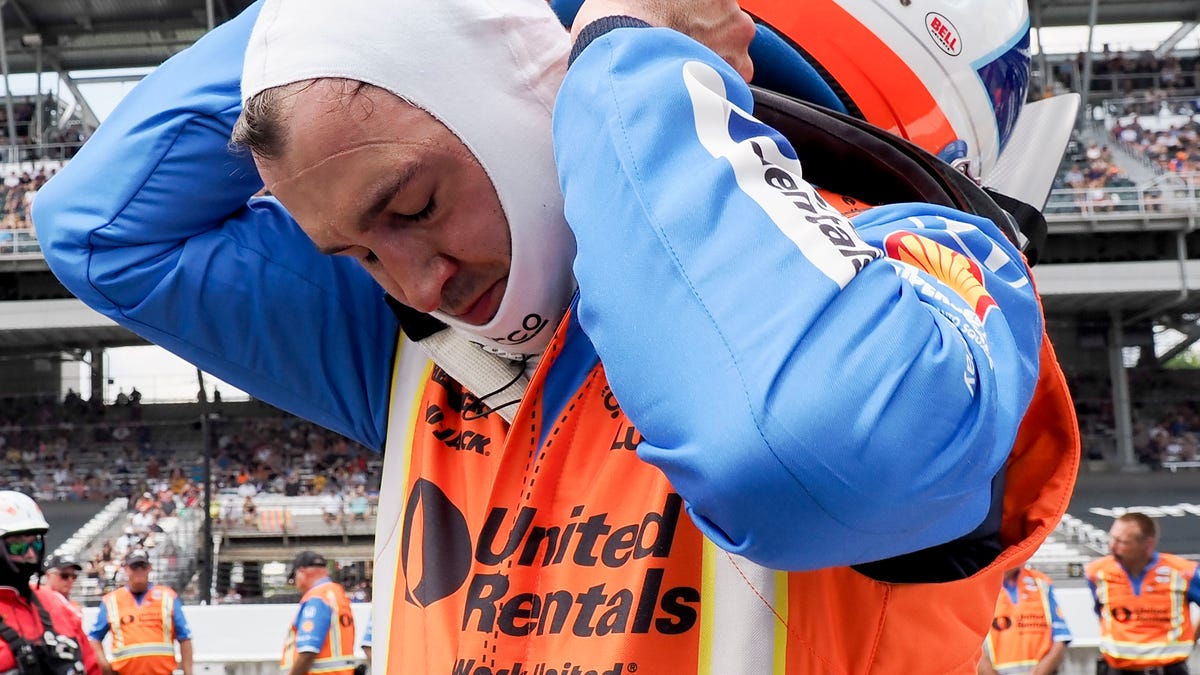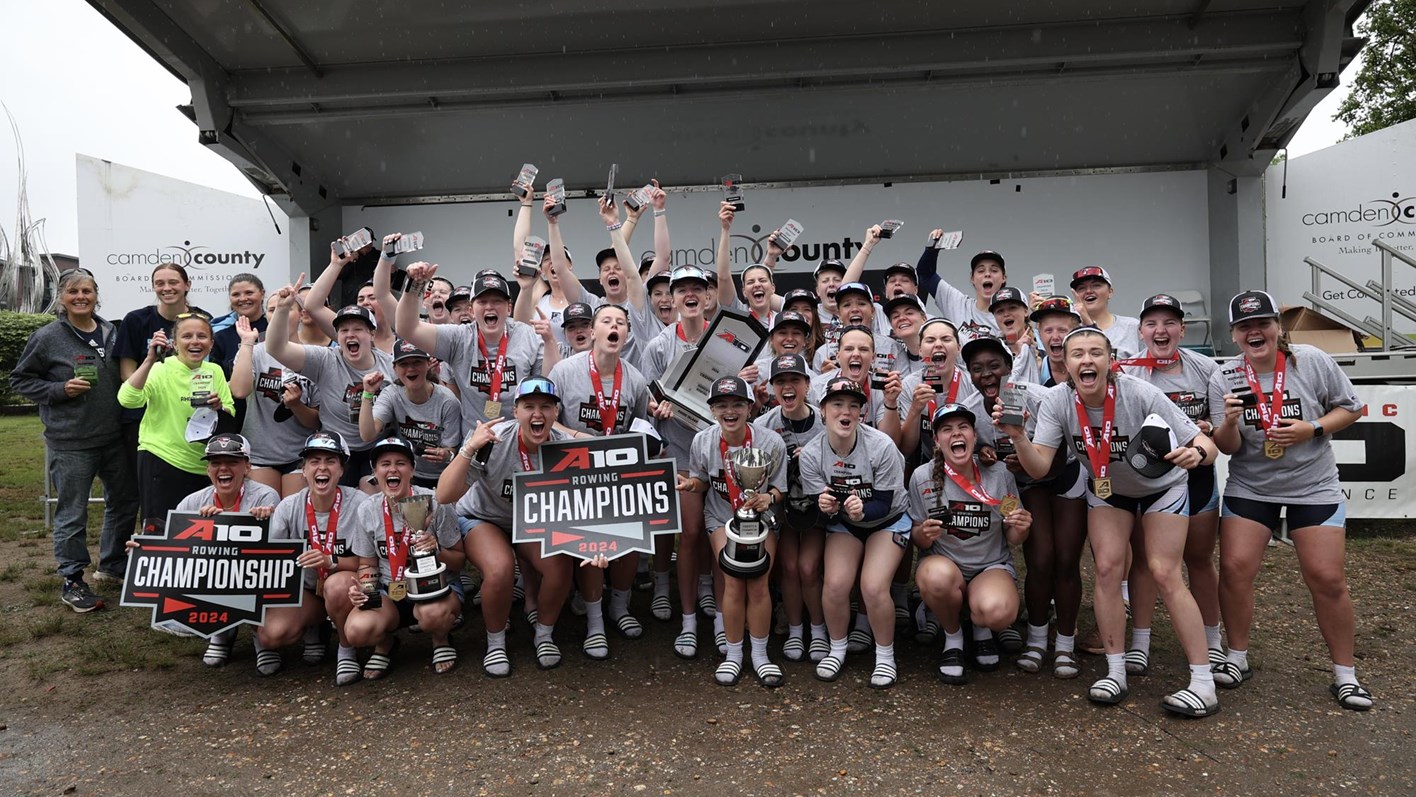Arizona
Arizona is poised for further momentum after TSMC, Intel and other semiconductor victories
Arizona needs tech workers. Here’s how to get more of them
Arizona’s growing semiconductor industry needs thousands of workers. Tarji Borders explains how she got the training to land a job at Intel.
Arizona Republic
Arizona, over the past three years, has scored some huge victories in luring major semiconductor investments to the state, including a major Intel Corp. expansion in Chandler and the construction of three new factories in north Phoenix by Taiwan Semiconductor Manufacturing Co.
Could all this be the prelude to an even bigger second act?
“There is critical mass — that’s the opportunity we have now in Arizona,” said Brian Harrison, president of TSMC Arizona. “We have a great opportunity to do even more in the next 10 years.”
Harrison described how the company’s factories or fabs in Taiwan have become hubs around which chemical suppliers, tool-equipment makers and other businesses have clustered. His comments came during a “Silicon Desert” forum hosted by EMD Electronics, which supplies equipment and provides testing services to semiconductor customers in Arizona and elsewhere.
The demand for semiconductors remains on a growth track, fueled by consumer products such as cellphones and computers, automobiles, data centers, and pretty much every other modern electrical device or industry. Artificial intelligence has provided new impetus.
A rising percentage of chips now are manufactured abroad, mainly in Taiwan, and reversing that trend has been the thrust of the CHIPS & Science Act of 2022. Under that legislation, the U.S. Commerce Department so far this year has awarded up to $8.5 billion in grants to Intel and $6.5 billion to TSMC, along with $162 million to Chandler-based Microchip Technology and other recipients.
Semiconductor manufacturers are using that money, combined with pledges for billions of dollars more in low-rate federal loans, to leverage their own investments.
TSMC’s planned Arizona investments have risen to $65 billion, along with $20 billion in recent new commitments by Intel. Those have helped to boost total semiconductor investments in Arizona to more than $100 million over the past four years, said Sandra Watson, president and CEO of the Arizona Commerce Authority and another speaker at the forum hosted by EMD Electronics, a business of German science and technology giant Merck KGaA.
Planning began before passage of key federal legislation
Arizona has fared well lately in this regard partly because of advance planning, Watson said. In 2021, a year before the CHIPS Act was enacted, the Commerce Authority brought together more than 50 industry leaders from various states, along with educational institutions such as Arizona State University and others, to develop a strategy. “We were able to establish a very strong plan,” Watson said, with collaboration the key.
Harrison echoed that sentiment and noted that TSMC considered many other locations in various states for its factories or fabs. Many of these other places had “different factions with their own vague agendas,” he said, rather than a unified gameplan like Arizona. “Everyone has water and roads,” he quipped.
More Arizona-focused technology announcements will be forthcoming, said Watson and Sean Fogarty, vice president of international business development at the Greater Phoenix Economic Council.
“We have a healthy pipeline of prospects” that are considering expansion here, with foreign businesses representing about one-third of those companies, Fogarty said.
Arizona already features a deep supplier base, a pro-business environment, favorable tax policies and an expanding workforce, Fogarty said. All that complements an educational system that is ramping up to funnel workers into the industry, from engineers at Arizona State University and the University of Arizona to technicians receiving training through the Maricopa Community College system and other programs. In addition, Arizona continues to add population, with many of the newcomers in the prime 18-to-44 working-age group, Fogarty said.
The power to make chip-expansion happen
Another critical consideration is the electricity to power these new industrial complexes, as well as related industries such as data centers, of which metro Phoenix now has one of the highest concentrations in the Western Hemisphere.
The EMD Electronics conference included assurances from both of the major electric utilities operating around metro Phoenix that power will be available when expansions get up and running.
“We are aggressively (adding) new resources over the next five years,” said Karla Moran, manager of economic development at Salt River Project. That includes more solar generation, mobile-home-sized batteries to store power early in the morning for release later in the day, and additional hydro capacity.
Kelly Patton, economic development manager at Arizona Public Service, said much the same. “We have prepared for this growth,” she said.
Both utility executives made the case for continuing to keep natural gas-fired plants in the mix for a while longer, despite emissions that make them targets for criticism from environmental groups and others. “If a monsoon hits and the solar field goes down, we can ramp up that natural gas,” Patton said.
Actually, the availability of renewable energy is another factor that gives Arizona an edge, as some companies expanding here, including Apple with its new data center in Mesa, have asked for it, Watson said.
A key factor in the Phoenix area’s success in attracting semiconductor manufacturers and other industries, she added, was ongoing efforts to keep the major utilities in the loop.
Some 54 megaprojects are in the works now across all industries, Watson said, and the Commerce Authority shares that information with local utilities. “We map out what sites they are considering so that our utilities can plan,” she said. “So the utilities know, in the next five years, where they need to be.”
While water is another critical need for the semiconductor industry, conference participants didn’t assess it as a key obstacle for Arizona, especially as manufacturers, including Intel, are striving to improve their recycling efforts. SRP, which supplies about half of the Valley’s water needs, said its reservoirs by later this spring are expected to be near full capacity.
For Arizona’s semiconductor industry, many of the “i’s” still need to be dotted and the “t’s” crossed. The giant fabs and expansion projects still need to be built, equipped and staffed with trained workers, many of whom haven’t completed or even started their educations. Suppliers need to be ready and waiting, with fewer of the supply-chain disruptions that have plagued the industry in recent years. Labor relations need to be maintained if not improved. The power and water for these complexes need to keep flowing, and partnerships strengthened.
But the infrastructure and other foundations have been laid and Arizona is in a good position for expansion, said Cori Masters, a senior semiconductor research analyst based in the Valley for Gartner.
“Now’s the time for ramping,” she said.
Reach the writer at russ.wiles@arizonarepublic.com.

Arizona
Analyst: NFL Teams Should Trade for Cardinals’ Budda Baker

ARIZONA — Arizona Cardinals safety Budda Baker is entering the final year of his contract with the organization, and though trade talks have simmered since last offseason (where the All-Pro went public with his trade request), the future is still unclear for one of the most beloved Cardinals of all-time.
Bleacher Report says teams should target Baker in trade talks.
“Budda Baker asked for a trade last year but the Arizona Cardinals ended up giving him a raise and he remains on the team amid speculations that a move could happen ahead of the draft. But the Cardinals should at least entertain the thought of trading Baker seeing as the 28-year-old is on the last year of his deal,” wrote Matt Holder.
“Not that Arizona needs it, but it would save them $15.1 million, per Over The Cap, by trading the defensive back in addition to getting a player of future asset back for a guy who might leave for nothing next spring. Also, it would be a bit of a surprise if the Cardinals are much of a playoff contender even with Baker in the tough NFC West.”
Holder brings up a great point – Arizona doesn’t need cap space. The thought of Baker departing Arizona isn’t exactly fuzzy for either side, especially for free after this season on the open market.
Yet if the Cardinals wanted to offload Baker, they should have maximized his value last offseason, when he was younger and not entering a contract year. Arizona looks to hold Baker in the desert at least for 2024, and talks can progress from there.
B/R listed the Baltimore Ravens, Detroit Lions and Philadelphia Eagles (who reportedly had interest in Baker last offseason) as prime destinations for Baker.
Baker has a cap hit of $19 million in 2024 according to Spotrac with $14.6 million due in cash.
Arizona
Rudy Giuliani receives summons in Arizona fake electors case, says attorney general

Rudy Giuliani claims bankruptcy after defamation case
Rudy Giuliani filed for bankruptcy after a jury ordered him to pay nearly $150 million for defaming two Georgia election workers.
Rudy Giuliani was served Friday with a notice to appear in an Arizona court to answer charges stemming from an effort to keep Donald Trump in the White House despite losing the 2020 election, according to Attorney General Kris Mayes.
An indictment against Giuliani and 17 others was issued by a grand jury more than three weeks ago. Giuliani was the last of the defendants to receive their summons.
“The final defendant was served moments ago,” Mayes posted on the social media site X. She tagged Giuliani’s account and wrote, “Nobody is above the law.”
Earlier in the day, Giuliani posted a taunting message to the platform referring to his avoidance of being served in the case. That post was later deleted, but Mayes shared a screenshot of Giuliani’s remarks, which included an image of him and six other people surrounded by balloons. Giuliani on Friday said on X that he was having an “early-birthday celebration in Florida.”
Arizona politics: Former Trump attorney John Eastman enters not guilty plea, says case headed to trial
The indictment alleges a slate of Arizona Republicans and Trump aides, including Giuliani, engaged in a conspiracy aimed at “preventing the lawful transfer of the presidency of the United States, keeping President Donald J. Trump in office against the will of Arizona voters, and depriving Arizona voters of their right to vote and have their votes counted.”
The defendants in the case face multiple felony counts, including conspiracy, forgery and fraud. If convicted, the crimes could carry prison time, though state law allows for less severe penalties, including probation, depending on a defendant’s circumstances, like past criminal history.
Friday morning, former Trump attorney John Eastman was the first defendant to appear in a Maricopa County courtroom. He entered a plea of not guilty and, after the hearing, said he would fight the case against him at trial.
Most of the other defendants are expected to appear in court or be arraigned virtually next week, on May 21, though some have delayed their appearances to June.
Arizona
Arizona mercy-rules Villanova to open Fayetteville (Ark.) Regional | ALLSPORTSTUCSON.com

Arizona will face host Arkansas in the next round of the Fayetteville (Ark.) Regional after routing Villanova 14-3 in a mercy-rule five-inning victory Friday.
Arizona (35-16-1) will play Arkansas (37-16) at noon Saturday on ESPN2. Arkansas beat Southeast Missouri 3-2 Friday in the other opening-round game Friday. The winner between Arizona and Arkansas advances to the championship round Sunday.
Dakota Kennedy and Tucson High graduate Carlie Scupin each hit home runs and four Wildcats drove in two runs each. Scupin went 3 for 3 and Kennedy scored three runs to help Arizona beat Villanova.
Arizona scored eight runs in the first inning to take a demanding lead over Villanova.
Scupin scored Kennedy from second base with a single to left field. The second run scored after Blaise Biringer (Cienega) drew a bases-loaded walk.
Emily Schepp hit a sacrifice fly to bring in the third run of the inning. Tayler Biehl hit a two-run double and Kaiah Altmeyer drove in a pair with a single to right field. Kennedy rounded out the scoring with a two-run home run – her 11th of the season.
Scupin extended Arizona’s lead to nine runs with a leadoff home run in the second inning.
In the fourth, Villanova scored three runs on a bases-loaded walk, a bases-loaded groundout, and a sacrifice fly.
Arizona plated five in the bottom of the fourth to take a 14-3 lead.
Allie Skaggs (Ironwood Ridge) opened the scoring with a two-RBI double and Olivia DiNardo plated the third run of the inning with an RBI single. Biringer scored Skaggs from third with a single and an RBI groundout from Schepp scored the final run of the inning.
Miranda Stoddard pitched the first three innings, allowing just one hit and striking out two to hold Villanova scoreless and pick up the win to improve to 6-8.
Brooke Mannon entered the circle to relieve Stoddard in the fourth and gave up three runs in four batters faced. Aissa Silva pitched the final two innings and kept Villanova scoreless on one hit.


















-

 Politics1 week ago
Politics1 week agoOhio AG defends letter warning 'woke' masked anti-Israel protesters they face prison time: 'We have a society'
-

 Finance1 week ago
Finance1 week agoSpring Finance Forum 2024: CRE Financiers Eye Signs of Recovery
-

 Politics1 week ago
Politics1 week agoBiden’s decision to pull Israel weapons shipment kept quiet until after Holocaust remembrance address: report
-

 World7 days ago
World7 days agoIndia Lok Sabha election 2024 Phase 4: Who votes and what’s at stake?
-

 News1 week ago
News1 week agoThe Major Supreme Court Cases of 2024
-

 News1 week ago
News1 week agoTornadoes tear through the southeastern U.S. as storms leave 3 dead
-

 World1 week ago
World1 week agoA look at Chinese investment within Hungary
-

 Politics1 week ago
Politics1 week agoTales from the trail: The blue states Trump eyes to turn red in November



















